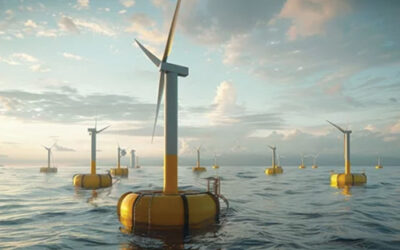Morro Bay’s Harbor Department is bailing water fast trying to keep its financial boat afloat, after the coronavirus pandemic response cut a huge hole in its revenue hull.
And while the proposed Fiscal-Year 2020-21 budget shows a small surplus, it’s because deep cuts have been made, like taking a chainsaw to the department’s expenses and future needs.
Harbor Manager Eric Endersby was uncharacteristically solemn when asked about his department’s finances, 90% of which derive from lease payments by businesses along Embarcadero and City owned slips and moorings.
They anticipate this year a double-digit drop in lease payments, Endersby explained, about $150,000, with next year more like $250,000.
Also, there is some $140,000 in deferred lease payments covering from April through June (the end of the fiscal year), he said.
The City Council voted to allow leaseholders to defer lease payments to August because the City, following orders from the Governor’s Office and County Health Department, issued shelter-at-home orders and closed all “non-essential” businesses, which included restaurants and retail shops — the majority of businesses on the Embarcadero; the very businesses paying the Harbor Department’s freight.
Endersby said he’s been meeting with leaseholders and a special committee formed to help with harbor issues about this and at this point, he doesn’t know how or when those payments would be caught up. They might just be forgiven, too.
As for the next budget, which totals some $1.9 million, they formulated it assuming a 50% drop in revenues, due mostly to an anticipated drop in tourism. But, if the crowds flocking to the waterfront the past several weekends is any indication, the drop might not be so steep.
Endersby said he was astonished to see how busy the Embarcadero has been, likening it to a 4th of July Holiday crowd, in town for a fireworks show.
He explained that he cut 20%-25% out of his discretionary boating expenditures; all their employees took a pay cut, himself included, of 5%-8%; and they have a part time office position that’s been vacant since last December.
Mooring and slip fees are scheduled to rise, which was approved in 2019, long before the virus crisis; and commercial fishing slips are due for an increase in October, though he’s unsure if that will still happen. There is also an inflation increase across the board that’s due.
“We pared way back,” Endersby said. “We laid off our maintenance guy, [Roger], who’s now working as a volunteer and we cut the harbor patrol reserves.”
Because of the City’s beach closure, which was just recently lifted, they didn’t get their normal lifeguard program going. But they’ve re-staffed the lifeguard towers.
“There were too many people on the beach,” he explained, to not have lifeguards on duty. He also cut his “line items” budget 20%. “I don’t know. We’ll have to find used nuts and bolts to hold things together.”
He noted that while the budget shows a $20,000 surplus, there is zero money allocated to their capital improvement program. Plus, “We still have an obvious structural budget problem,” he added, referring to the department having to dip into reserves to balance its budget for the past several years. They do so again in next year’s spending plan. City Hall has the same problem compounding the woes for its budget that also was decimated by the virus closures and resultant tax revenue shortfalls.
And they have just $58,000 in the “equipment replacement fund.” They anticipate they’ll have to replace a patrol boat soon, at a cost of about $650,000.
But even with the harbor department running on a sliver of margins, City Hall is still taking $286,000 out of the budget for its cost allocation program. That money is to reimburse City Hall for services likes human resources, administration, accounting and the city attorney and is charged to enterprise funds like the Harbor Fund (and water and sewer funds, too).
He knows of just two businesses so far that won’t reopen on the Embarcadero — Junque Love in Marina Square and Babylonian Soap Co., at Dutchman’s Landing. He’s unsure if there will be more.
“Most of the businesses are open now,” he said, “although they’re restricted, restaurants to 50 percent of capacity. Fortunately — knock on wood — we haven’t had a lot of losses. Some I imagine are hanging on by their fingernails.”
He speculates that some business people may be waiting out the summer before decided whether to stay open or throw in the proverbial towel.
One glaring item in the department’s budget woes is an absolute lack of money for capital improvements, which total about $5 million just for the next 5 years.
He said they’d looked at all the harbor infrastructure taking into account age and condition, and the costs to fix it. “It’s a lot of money,” he said. He admits the department hasn’t historically funded depreciation of its facilities. And they also don’t have a dedicated emergency reserve.
There could be some relief on the horizon after the City Council approved establishing RV camping areas on City property for the first time ever.
Right now they’re looking at 4-5 spaces at Target Rock, 3-4 at Coleman Park, 5-6 in the Triangle lot, and a few spots by the City storage area next to Morro Creek.
They are also looking at several RV spots in the launch ramp parking lot that would be reserved for fishermen during fishing season — April 1 to Dec. 31 — and for use by anyone in the off season (Jan. 1 to March 31).
He said they are looking at charging about $60 a night, which is more than a State Park campground spot, and more than local private RV parks charge, so as not to compete.
It will all be “dry” camping with no hookups but these spaces will have something no others have — bayside camping.
The estimates are that at just 50% occupancy, the department can raise $130,000-$135,000 annually, Endersby said. They’ll of course need to spend some money delineating the camping spaces, setting up an online reservation and payment system, and will have some new costs enforcing and managing the spaces.
“It’s a pilot program,” said Endersby, for about the next 6 months. The Coastal Commission, which approved the matter on an emergency permit, wanted some tent camping areas too, he added.
In those cases, they’ll need to have a restroom available 24/7, Endersby said, something that’s hard to do a
Coleman Park, as the City condemned the restrooms there due to some undisclosed structural issue. They might have to bring in portable toilets.
The Commission understands that this is an emergency situation, he said, but if they decide to make it permanent, they’ll have to get a coastal development permit from the Commission.
There’s also the possibility of offshore wind energy bringing in some revenues at some future date. Castle Wind is vying to build a 1,000 megawatt wind energy farm off the coast of San Simeon, bringing the energy ashore through the old power plant outfall canal, which would require a lease agreement with the City.
When Duke Energy had the plant, it paid the Harbor Fund $275,000 a year and City Hall got $500,000 guaranteed minimum for the outfall canal lease. That money dried up in 2012, but could be resurrected at least in part if Castle Wind builds its project.
Then the question becomes how much of the lease payments would go to the harbor fund and how much to City Hall? Endersby admits there has been some discussion of that issue but it remains unresolved.
The outfall is a tidelands trust lease site, Endersby pointed out. So at least some of the payments should rightly stay on the waterfront.
In a presentation to the Harbor Advisory Board, Endersby wrote, “It is significant to realize, however, over the foreseeable future, Harbor-related operational service, capital asset/equipment improvement and replacement funding needs cannot be adequately met with current revenue streams, fee structures or lack of economic development or enhancement.
“Retirement in two years of the $135,000 payments on the 1990’s South T-Pier loan from the Division of Boating and Waterways after that pier burned [in 1988], will have the greatest positive fiscal impact in the near mid-term.”
How do they plan to address all this? They first plan to implement a new Harbor Lease Management Policy. Endersby said they need to step up their management duties; find a way to better keep tabs on the leaseholders and lease sites; especially with regards to maintenance of the facilities. That would also include better auditing services.
“It’s going to take staff and we’re all stretched thin right now,” he said. “We need a way to be more efficient in managing the lease sites. Do we keep it in-house or contract out? We still need department oversight. Something needs to change, we’re not keeping up in managing.”
And in what could be the most controversial thing the Council has done since the Main Street parklet fiasco, the City Council voted to turn the heart of the Embarcadero — from harbor to Marina street — into a one-way street (see related story) to increase social distancing of pedestrians.
Summed up, the coming changes — RV spaces and the one-way street — and the deep budget cuts are “drastic measures for drastic times.”



